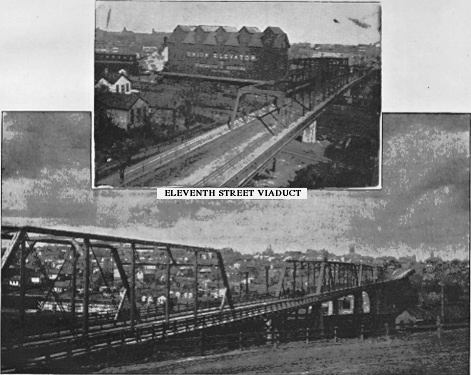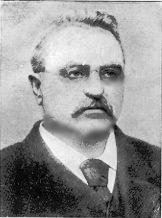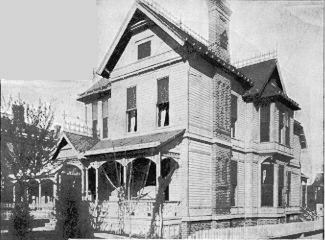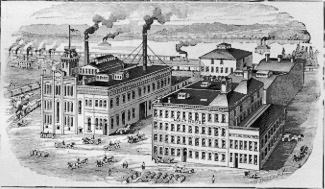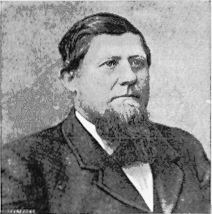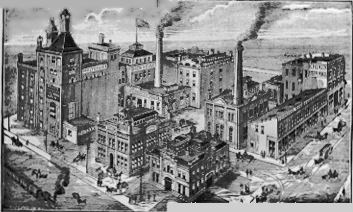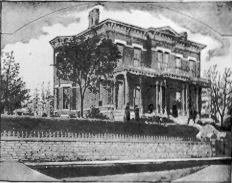|
OMAHA
ILLUSTRATED.
the purpose being to afford ample
trackage and switching facilities, which will prevent any
corporation controlling yard facilities in a manner inimical
to any other or to the interests of the yards. A tunnel
leading to the Missouri River has also been constructed to
afford proper drainage, and this with a good system of
water-works afford good sanitary conditions. Naturally the
development of such big enterprises and the employment of so
many men has gathered about the locality a considerable
population. South Omaha has been incorporated as a city of
the second-class and has
|
[Charles
McKenzie Dinsmoor, A. M., M. D., is of Scotch
descent. His ancestors emigrated from the mother
country and came to New Boston, New Hampshire, in
1756. The subject of this sketch was born in
Windsor county, Vermont, August 1, 1828, and he
lived there with his grandfather, Deacon Charles
McKenzie, on the latter's farm, until he arrived at
the age of eighteen years. He was fitted for
college at Kimball Union Academy at Meriden, New
Hampshire, and received his degree of Master of
Arts from
|
|
Waterville College, Maine. Having a predilection
for physics, he pursued his studies with the late
doctors, Ira Warren, of Boston, and Horace Green,
of New York; also at the Vermont Medical College
and at the Harvard Medical College, where he took a
partial course. He completed them at the Hahnemann
Medical College and Hospital, of Chicago. In 1881
Dr. Dinsmoor received the honorary degree of M. D.
from the Homeopathic Medical College of Missouri,
of St. Louis. He came to Omaha in 1878 and has
taken high rank as a physician and a citizen. He
has received many professional honors since his
residence here. At present he is a member of the
Nebraska State Homeopathic Medical Society, of
which he has been president; also a member of the
Western Academy of Homeopathy, of which he has been
vice-president; also a member of the Associated
Alumni of Hahnemann Medical College and Hospital of
Chicago, of which he is the present president and a
member of the American Institute of Homeopathy. Dr.
Dinsmoor has built up a large and highly lucrative
practice and is regarded as one of the most
successful physicians in the city. He has been
largely instrumental in bringing the Knights of
Pythias to their
|
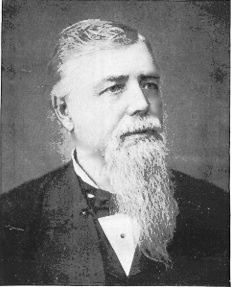
DR. C. M. DINSMOOR, PRESIDENT K.
OF
P. BUILDING ASSOCIATION.
|
present highly flourishing condition in the city
and State. He is a member of the Nebraska Lodge,
No. 1, Knights of Pythias, of which he is
Chancellor Commander, and he is Surgeon, with the
rank of Major, of the Second Regiment, (Omaha)
Uniform Rank, Knights of Pythias, and also
President of the K. of P. Building Association.
(The Knights of Pythias Building Association of
Omaha is an incorporated company with a capital
stock of $300,000 divided into shares of $10 each.
The forming of such a corporation for the purpose
of erecting a magnificant Castle Hall which should
at once be a credit to the order and an ornament to
the city, originated with Jas. A. Brown and Henry
Creighton, composing the firm of Brown &
Creighton; Dr. C. M. Dinsmoor, David Kaufman, Col.
Thomas Burrell, C. S. Higgins and a few other well
known members of the order. These enthusiastic
Knights have been constant and untiring in their
efforts to make the enterprise a success and have
already placed a sufficient number of shares of
stock, principally amongst members of the order, to
insure the building of the finest Castle Hall in
America. This imposing structure is to be located
at the intersection of Farnam. and Nineteenth
streets, a site where its architectural beauties
will
|
|
stand out in bold relief. To the architects,
Messrs. Mendelssohn & Lawrie, great praise is
due for the conception of a plan so unique and
appropriate. The officers of the company are:
President, Dr. C. M. Dinsmoor; secretary, Jas. A.
Brown; treasurer, David Kaufman.) It can be as
truly said of Doctor Dinsmoor as of any other man,
that he is a self-made citizen. His life has been
full of the toil and struggles that fall to the lot
of the physician depending solely upon his own
skill and knowledge. At the age of fifty-eight
years he is full of vigor, sound in mind and body,
a hearty, sturdy representative of the old New
England stock. His present wife, Mrs. Orpha C.
Dinsmoor, was a native of Windsor county, Vermont,
though she lived in Illinois for many years. She is
one of the best known ladies in Omaha and is at
present the president of the Associated Charities
of Nebraska, and a member of many other city, State
and National organizations.]
|
now an estimated population of 12,000. Enterprising real
estate firms have reaped a bonanza from the rapid rise in
value of property suitable for residence purposes and the
locality having street railway as well as hourly railroad
connection with the city proper, lots for residence purposes
are in great demand because of their cheapness. It is also
announced that during 1888 two syndicates will construct a
few hundred cottages for purposes of renting. No adequate
description of the rapid growth of South Omaha can be put on
paper. It is known though that over $1,000,000 have been
expended this year (1887) in improvements, a remarkable
showing for a city of its size. It has been already pointed
out that the conditions have been favorable to the
development of the existing great interests, and not the
least of these conditions is found in the circumstance that
Nebraska, Wyoming, Dakota, Kansas and all the western
country tributary to Omaha are rapidly developing. The great
cattle kings whose thousands of beeves grazed upon the
western plains are disappearing and the vast herds with
them. Cattle, sheep and hog raising is passing into the
hands of the farmer,
[122]
|
